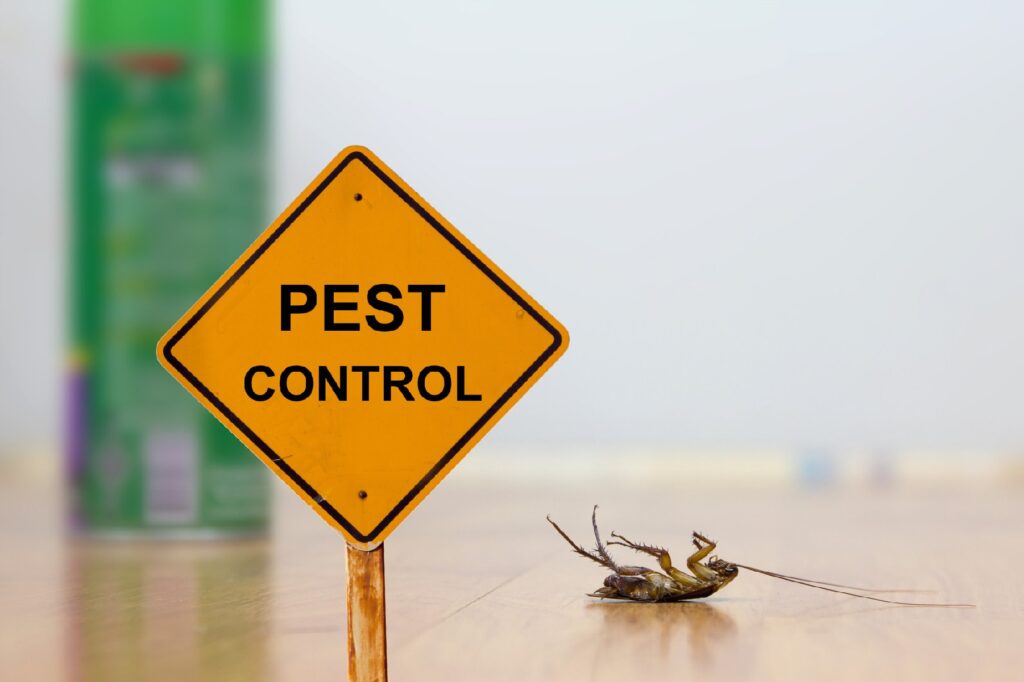Reliable Bug Control Services: An In-Depth Take A Look At Extermination Techniques and Prevention Actions
In the realm of bug control services, the successful monitoring of invasions needs a thorough strategy that incorporates various strategies and actions for both eradication and prevention. From Integrated Parasite Monitoring (IPM) methods that prioritize lasting options to chemical extermination techniques designed for targeted removal, the arsenal versus pests is huge and diverse.

Integrated Pest Monitoring (IPM) Techniques
Integrated Pest Monitoring (IPM) Approaches encompass a comprehensive technique to pest control that concentrates on monitoring, control, and avoidance methods to effectively manage pest populaces. By integrating different techniques, IPM intends to decrease the effect of parasites while also decreasing the dependence on chemical pesticides. Prevention exists at the core of IPM, emphasizing practices like proper cleanliness, upkeep of hygiene, and sealing entry indicate hinder pests from infesting structures. Monitoring plays an essential duty in IPM by frequently recognizing and inspecting parasite degrees to figure out the suitable treatment limits. Control techniques in IPM focus on the usage of physical, organic, and cultural approaches before turning to chemical treatments as a last hope. These approaches include introducing natural predators, habitat modification, and using capturing gadgets to maintain pest populations in check. Overall, IPM fosters a lasting and ecologically conscious method to pest administration, promoting lasting remedies that safeguard both human wellness and the ecological community.
Chemical Extermination Techniques
Chemical extermination strategies are generally employed in bug control services to efficiently get rid of bug populaces that position a threat to human health and property. These techniques entail making use of numerous chemical materials particularly developed to target and get rid of bugs such as pests, rodents, and other undesirable animals. The application of chemicals, insecticides, rodenticides, and other chemical representatives is meticulously controlled to make certain maximum efficiency while reducing threats to humans, animals, and the environment.
One of the essential advantages of chemical elimination strategies is their capacity to give quick and targeted outcomes, making them especially useful in instances of serious problems or immediate pest control demands - a1 bed bugs exterminator portland. Nevertheless, it is important to stress the value of appropriate handling, application, and disposal of these chemical items to prevent unexpected injury
Moreover, integrated parasite administration (IPM) methods often combine chemical elimination methods with other approaches such as cleanliness, environment modification, and biological controls to develop a extensive and sustainable insect control method. By integrating chemical elimination techniques sensibly within an IPM structure, insect control services can efficiently handle pest populations while lessening possible risks to human health and wellness and the environment.
Organic Insect Control Methods
Using natural killers and try this parasites to handle insect populations is a lasting method understood as organic bug control. This method utilizes the natural systems of the community to control pest populations without depending on artificial chemicals. One common biological control method involves presenting all-natural enemies of the target insect types, such as ladybugs for aphid control or nematodes for termite problems. These natural killers eat the pests, assisting to keep their populaces in check.
An additional reliable organic control technique is making use of microbial pesticides. These are normally taking place microorganisms, such as germs, infections, and fungis, that specifically target and contaminate certain parasite types. By using these microbial representatives, bug populations can be efficiently lowered without harming helpful organisms or creating damage to the environment.
Physical Pest Prevention Actions
Executing physical pest prevention steps includes making use of barriers and architectural modifications to hinder bugs from entering or infesting a residential property (a1 portland pest control bed bugs). One reliable approach is sealing all possible access points such as spaces around doors, windows, and utility infiltrations. Setting up door moves, displays on windows, and sealing cracks in the structure can help protect visit against pests like pests and rats from accessing indoors. Additionally, keeping a clean and clutter-free setting is critical as insects are drawn in to food sources and hiding spots. Consistently checking and fixing any damaged screens, vents, or roof floor tiles can also aid in keeping pests out.
One more physical prevention procedure is making use of obstacles like secure fencing to maintain bigger parasites such as deer or raccoons away from the residential property. Setting up mesh or wire screens around gardens can secure plants from being damaged by pests. Correct waste administration, consisting of safeguarding wastebasket with tight-fitting lids, is essential in preventing bugs like raccoons, insects, and rats. By applying these physical insect avoidance steps, homeowner other can considerably decrease the risk of pest infestations and the damage they can cause.
Expert Pest Inspection Procedures
Conducting extensive and methodical pest inspections is a fundamental element of professional bug administration methods. Professional bug assessors are trained to meticulously analyze homes for indicators of problems, recognizing pest types, entrance points, and helpful conditions.

Verdict
Finally, efficient pest control solutions utilize a selection of methods, including Integrated Pest Administration strategies, chemical extermination methods, biological controls, and physical prevention measures. Professional parasite inspection treatments play an important role in recognizing and addressing pest issues in a prompt manner. By applying a combination of these techniques, property owners can successfully manage and stop pest infestations.
From Integrated Parasite Administration (IPM) approaches that focus on lasting services to chemical elimination methods designed for targeted removal, the toolbox against insects is diverse and huge.Integrated Bug Management (IPM) Strategies include an extensive strategy to pest control that concentrates on avoidance, control, and tracking methods to effectively manage insect populations.Chemical extermination techniques are commonly employed in bug control services to efficiently eradicate parasite populaces that pose a threat to human health and wellness and property.Employing all-natural predators and parasites to handle insect populations is a lasting approach understood as organic parasite control.In verdict, efficient bug control services use a selection of strategies, including Integrated Insect Management approaches, chemical elimination techniques, biological controls, and physical avoidance actions.